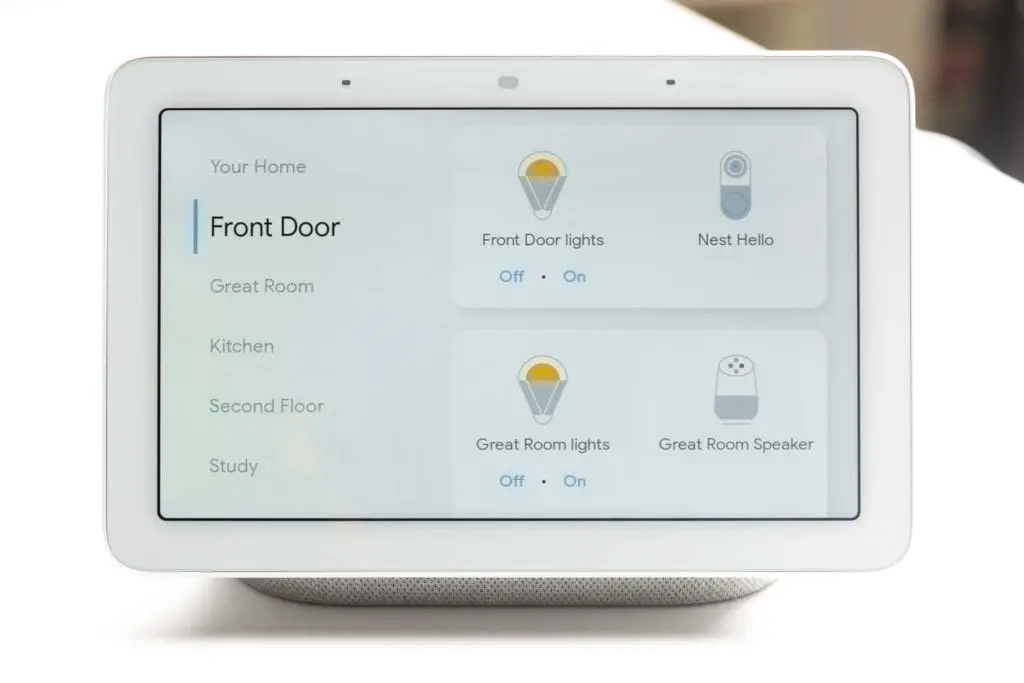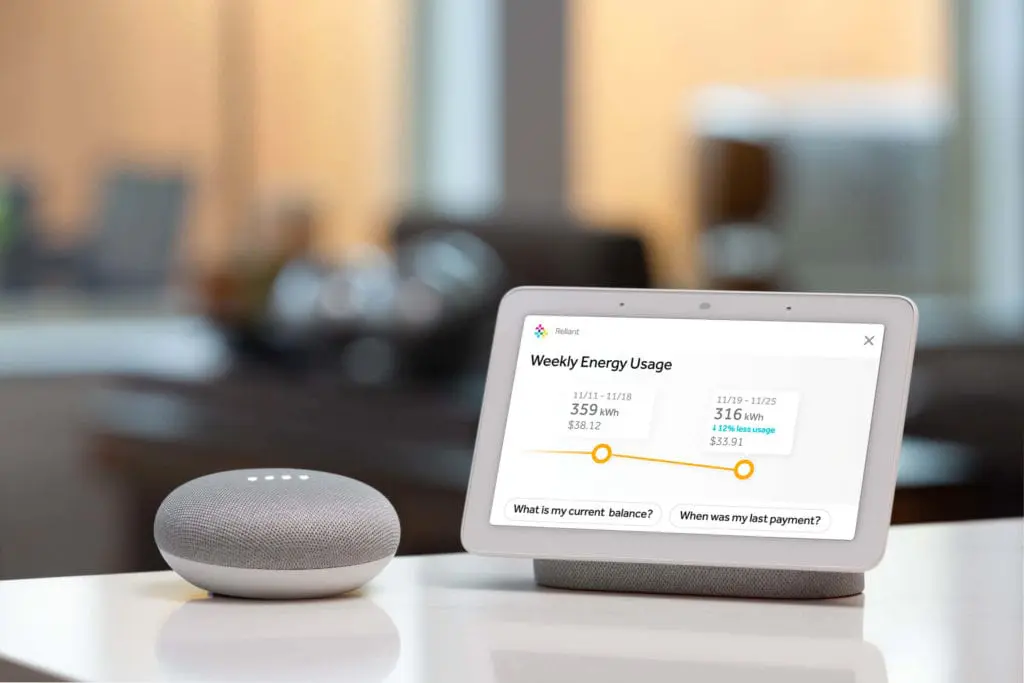How to use smart tech to reduce new home energy bills

You may already be using a smart speaker and Amazon Alexa, Apple Siri, or Google Assistant to control smart lighting, find recipes, and play music in your home.
There’s no doubt these smart voice assistants are rapidly gaining new skills, but did you know you can use them to help save on your utility bills? That’s one key homeowner benefit of a new Google program, where they are partnering with electrical utilities to place a Google Home Hub display in your new home equipped with special energy-related Google Assistant skills.
Knowledge is Power, Which is Money
The adage you can’t manage what you don’t measure comes into play in your home, and rings especially true when you are trying to keep monthly expenses down. Receiving an unexpectedly high utility bill a month after the fact doesn’t do much to alert you to excessive energy usage, when your only recourse is to pay the bill.
That’s where the Google ecosystem and your new home’s smart electrical meter can synch up to provide instantaneous access to energy data. In particular, with the Google Home Hub and the Reliant skill for the Google Assistant, Reliant Energy customers in Texas can use the voice command “Hey Google, ask Reliant how much electricity am I using” to get a chart depicting real-time energy usage in their home. Given that knowledge, customers can take action to reduce energy usage and save on their next bill.
Natural Conversations Enabled by Smart Speakers
The natural language conversations between you as a homeowner and your electrical utility are a relatively new phenomena, but the broader adoption of smart speakers should bode well for the expansion of these services down the road. According to recent research by Parks Associates, the percentage of U.S. households with smart speakers more than doubled in 2018 alone, rising to a total of 31% of all broadband-equipped homes.
As consumers are embracing voice activation, electrical providers across the country are working with Google and a set of application programming interfaces (APIs) to develop energy-related services for Google Home Hub and Google Assistant.
“We see these natural conversations as a reinvention of the digital customer experience,” said Aaron Berndt, head of central region energy partnerships at Google. Berndt spoke at the February 2019 Parks Associates-hosted Smart Energy Summit in Austin, Texas, where utilities, technology companies, and industry analysts convened to share best practices and learn about the latest trends in smart energy.
“Today, we are seeing a societal shift from mobile to ambient computing,” continued Berndt. “We are working with our utility partners to develop these personalized experiences as a way to enable easy, intuitive, consistent, and delightful interactions.”

What It Takes to Get Connected
In the case of Reliant Energy, among their offerings is a 12-month service plan with an included Google Home Hub. After you subscribe to the plan, a Google Home Hub gets shipped to your home and will need to be connected to the Wi-Fi network.
In order to get everything working, you will need to install the Google Home app on your Apple iOS or Android mobile device, then link the Reliant skill for Google Assistant with your Reliant utility account. Apple users will also need to install the standalone Google Assistant app.
What You Can Do
With the Reliant Energy implementation on Google Home Hub, Google Assistant voice commands begin with the “Hey Google, ask Reliant” prefix. Then, any of the following commands can be issued, and the results will be displayed on Google Home Hub:
- How much electricity am I using?
- What is my energy usage?
- What is my current balance?
- What’s my bill?
- When is my bill due?
- When was my last payment?
- How much did I pay last time?
- What plan am I on?
- When is my contract up?
- When does my plan expire?
The list of energy-related voice commands is sure to grow over time as Google continues to enhance Google Assistant and the related APIs. And since Google Home Hub functions as a smart speaker, it can be used to issue any other legitimate Google Assistant command. Furthermore, you can control any of the over 10,000 available smart home accessories in the Google connected home ecosystem.
Another benefit of Google Home Hub is its visual, room-by-room view of the smart accessories in your home as active icons. For instance, tapping the icon for a Nest Hello video doorbell will display the live stream from the device.
More to Come
In addition to Reliant Energy, utilities such as Indiana Michigan Power, Xcel Energy, and others have already launched similar voice-activated services for their energy customers. You can look for many more utilities to follow suit.
 The 10 Best Places to Retire in Maryland in 2021
The 10 Best Places to Retire in Maryland in 2021